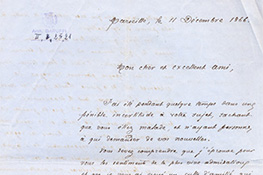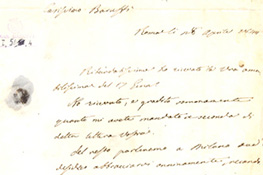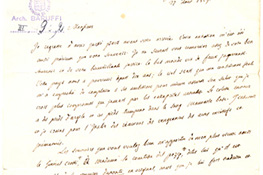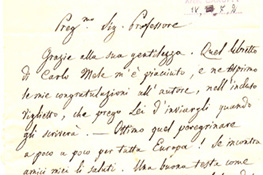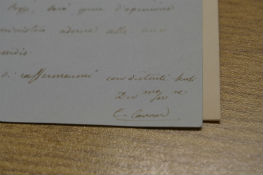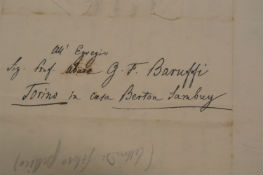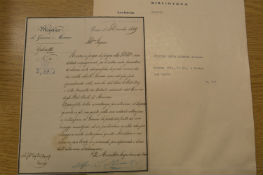Versione italiana English version Version française Versión en español
About 650 letters addressed to Giuseppe Baruffi by political, literary and above all scientific personalities constitute a small but interesting collection chronologically located in the central decades of the 19th century.
Giuseppe Francesco Baruffi (1801-1875) was born in Mondovì, son of the notary Pietro and Margherita Gastone, cousin of Michele Gastone who was one of the heads of the secret societies in Piedmont during the Restoration. A passionate lover of natural sciences, he mainly carried out an activity of scientific popularization and modernization in the social and economic field, promoting battles against outdated institutions such as port quarantine practices and the complicated customs laws in force in Europe. As a member of the Academy and the Agricultural Association of Turin, he promoted the modernization of the agricultural system. Together with some fellow students he began from his youth to collect and classify specimens of the local flora; the cards resulting from this work were then used by Colla for his monumental Erbarium Pedementanum.
Among the works published by Baruffi, we remember the Autumn Pilgrimages (published between 1840 and 1842), some travel diaries (was in Germany, Denmark, Hungary, France, Russia, Greece, Turkey and Egypt) and the Walks around Turin (fifteen pamphlets published between 1853 and 1861). In the background there are also several minutes of letters by Baruffi and notes for the essays given to the prints.
Going into detail, and considering the often impossible distinction of correspondents between writers, politicians and scientists, given the inextricable mixture of roles, we note the presence of the two brothers D'Azeglio (Massimo and Roberto), by Vittorio Bersezio, Angelo Brofferio, Cesare Balbo and Cesare Cantù, Vincenzo Gioberti, Silvio Pellico, Federigo Sclopis, the French poet and political writer Alphonse de Lamartine. Interesting and curious letters, quite numerous, that touch on the Suez Canal issue, addressed to the Baruffi by Jules Barthélemy-Saint-Hilaire (1805-1895) philosopher, journalist and French politician who in 1855 became a member of the international commission charged with studying the project for the cutting of the isthmus of Suez. And again on the same theme, the letters received from Clot-Bey, or Antoine Barthélémy Clot (1793-1868), French doctor who lived long years in Egypt.
Among the scientists, we mention Matteo Bonafous (with 30 letters), the botanist Luigi Colla, Carlo Luciano Bonaparte, biologist, Napoleon's brother's son, and the mathematician-astronomer and geodesist Giovanni Plana, of which we can read a Note on the very bright comet seen from Turin on the night of June 30, 1861.
- Archive inventory (pdf 4.1 MB)

